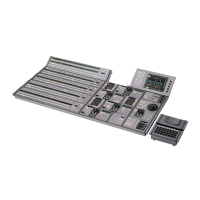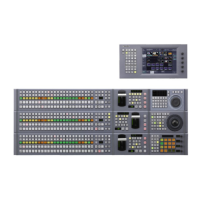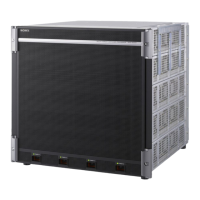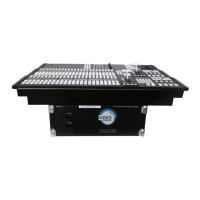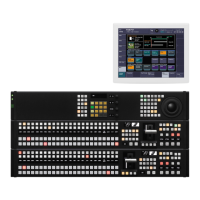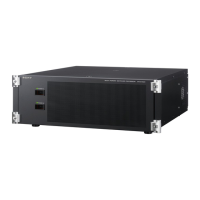forward as a macro event, save the affected region
together in the macro.
Events requiring adjustment when creating a
macro
The following events require time for execution to
complete, and therefore when executed within a macro
sequence, a pause event must be inserted to adjust the
timing.
Recall macro register 2, and
move to another event.
,
Macro being edited
(register 2)
m
Recall register 1.
Newly recalled macro
(register 1)
•
Rewinding effects involving external device control
•
VTR/disk recorder/Extended VTR cue-up
For example, create a macro to cue up a VTR and then play
back as follows.
Macro event execution order:
Macro events:
Copy contents of register 1 and add after current event
(register 2).
Contents of register 1
remain unchanged.
Auto insert mode on/off setting
You can switch on or off the mode (auto insert mode) in
which at the same time that a control panel operation is
carried out, the event is automatically saved in a macro.
Editing a macro
You can carry out the following macro editing operations.
Event insertion
Insert the control panel operation as an event in a macro.
Event modification
Modify any event. You can modify all events within a
macro, or events within a specified range in a single
operation.
Event deletion
Delete any one event. You can delete all events within a
macro, or events within a specified range in a single
operation. You can then paste the deleted event using the
paste function.
Event copy
Copy any one event. You can copy all events within a
macro, or events within a specified range in a single
operation.
Event paste
Paste a copied or deleted event at a desired position within
a macro.
Undoing an editing operation
You can undo the last event insertion, modification,
deletion, or paste operation.
Macro merging
During macro editing, you can recall and copy another
register to merge it with the macro being edited.
For example, while editing macro register 2 you can recall
and copy register 1 to merge it as shown in the following
figure.
Macro Execution
To execute a macro, recall the register in which the macro
is held. Simultaneous with the register recall, all events
stored in the macro are played back (executed) in sequence
without pause.
Pausing and restarting macro execution
It is also possible to execute a macro in the following ways.
Pause event
To adjust the execution timing of a particular event (to
delay the start of execution of the event by a particular time
interval), you can store a special event which pauses macro
execution. This event is called a “pause event.” When you
store a pause event, you can set the interval for which the
macro is paused (the pause length) to any value in the
range 1 to 999 frames. When the set time has elapsed, the
macro is automatically executed.
Pause zero event
By including a pause event with the time set to zero, you
can make macro execution pause at the pause event.
Step execution (requires a Setup menu setting)
By selecting step execution mode in the Setup menu, you
can make macro execution pause every time an event is
executed.
Take operation
When a paused macro is restarted, this is referred to as a
“Take” operation.
Macro take operation using a GPI input
You can carry out a macro take operation using a GPI input
on the control panel and DCU.
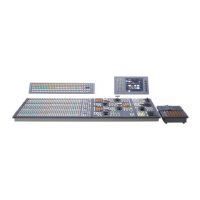
